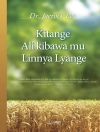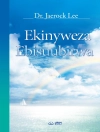Fides quaerens intellectum is the idea that living faith naturally seeks a more complete understanding of God in relation to his creation. It has motivated Christian education from the very start. Although Ars quaerens intellectum–‘art seeking understanding’–is by contrast a contemporary locution, in the Christian context of this volume it is a parallel to the more familiar phrase. ‘Art’ here includes human making of the sort associated with any craft; this volume focuses on those usually called ‘fine’ arts, namely poetry, painting, sculpture, and musical composition.
The contributors to Art Seeking Understanding contend that art in almost any medium is typically born of a desire for some kind of understanding–perhaps of the potential in their medium, an aspect of the external world, or of the artist’s own compulsion to create. An artwork may be prompted by a desire for greater understanding of transcendent realities. A distinctive value of the collaboration represented in this book is thus the reflection of artists themselves set alongside remarks by philosophers, theologians, literary critics, art historians, and musicologists. Together, these authors argue that there is a tacit if not explicit theological dimension to art-making that reveals itself readily in religious art but also in works that may have no such conscious motivation.
The artist, like all human creatures, is made in the image of God ( imago Dei), but as both Scripture and tradition suggest, may in fact realize more intensively than the rest of us an aspect of the divine Maker. In turn, those who appreciate art may come to acquire an understanding of the nature of the Original Artist indirectly through allowing the works of gifted artists to spark their imaginative reflection. In this way, art ‘speaks’ to us theologically in ways that substantially enrich our knowledge of our Creator and his creation. This volume invites readers to consider how God speaks, his characteristic poetic voice, and the influence of that voice on our knowledge of the holy.
Table of Content
The Art of Scripture
1 Art and Understanding in Biblical Poetry
(David Lyle Jeffrey)
2 God’s Pentateuchal Poesy: Why Does the Lord Speak in Poetry in the Torah (and Other Places Too)?
(Brent A. Strawn)
Theology in the Arts
3 Bonaventure on the Arts: Toward a Theology of Verbal Poiēsis
(Phillip J. Donnelly)
4 Something Understood: George Herbert and Francis Bacon in Dialogue
(Katie Calloway)
5 Artworks and the Increase of Christian Wisdom
(Robert C. Roberts)
6 The Hope of Recognition
(Christina Carnes Ananias)
7 Jacques Maritain, Art, and the Varieties of Transcendence
(Thomas Hibbs)
8 Psalm 137, the Harlem Renaissance, and the Function of Poetic Form
(Abram Van Engen)
9 De Musica Dei: Music, Mimesis, and Theological Representation
(Barry Harvey)
Artists Seeking Understanding
10 To Understand or to Be Understood: A Poet’s Perspective
(Micheal O’Siadhail)
11 The Space Between: A Sculptor’s Journey among the Mysteries, Wonders, and Paradoxes Inhabiting the Space between the Genesis and the Revelation of an Artwork
(Douwe Blumberg)
12 Art’s Under-standing: Culture Care and a Theology of Making
(Makoto Fujimura)
13 Art Seeking Understanding: The Awkwardness of Music
(Jeremy Begbie)
About the author
David Lyle Jeffrey is Emeritus Distinguished Professor of Literature and the Humanities at Baylor University. Jeffrey earned his Ph D from Princeton University and is also the author or editor of many books, including The King James Bible and the World It Made and We Were a Peculiar People Once: Confessions of an Old-Time Baptist.
Robert C. Roberts is Distinguished Professor of Ethics, Emeritus, at Baylor University (philosophy). He works primarily in moral psychology, with special attention to the role of emotions in moral and spiritual character. His latest book is Recovering Christian Character: The Psychological Wisdom of Søren Kierkegaard.







![Cover of Brian Schrag & Julisa Rowe: Community Arts for God's Purposes [Chinese] 貼近神心意的社群藝術 Cover of Brian Schrag & Julisa Rowe: Community Arts for God's Purposes [Chinese] 貼近神心意的社群藝術](https://static.worldofdigitals.com/thumb_webp/740/9781645083740.webp)




